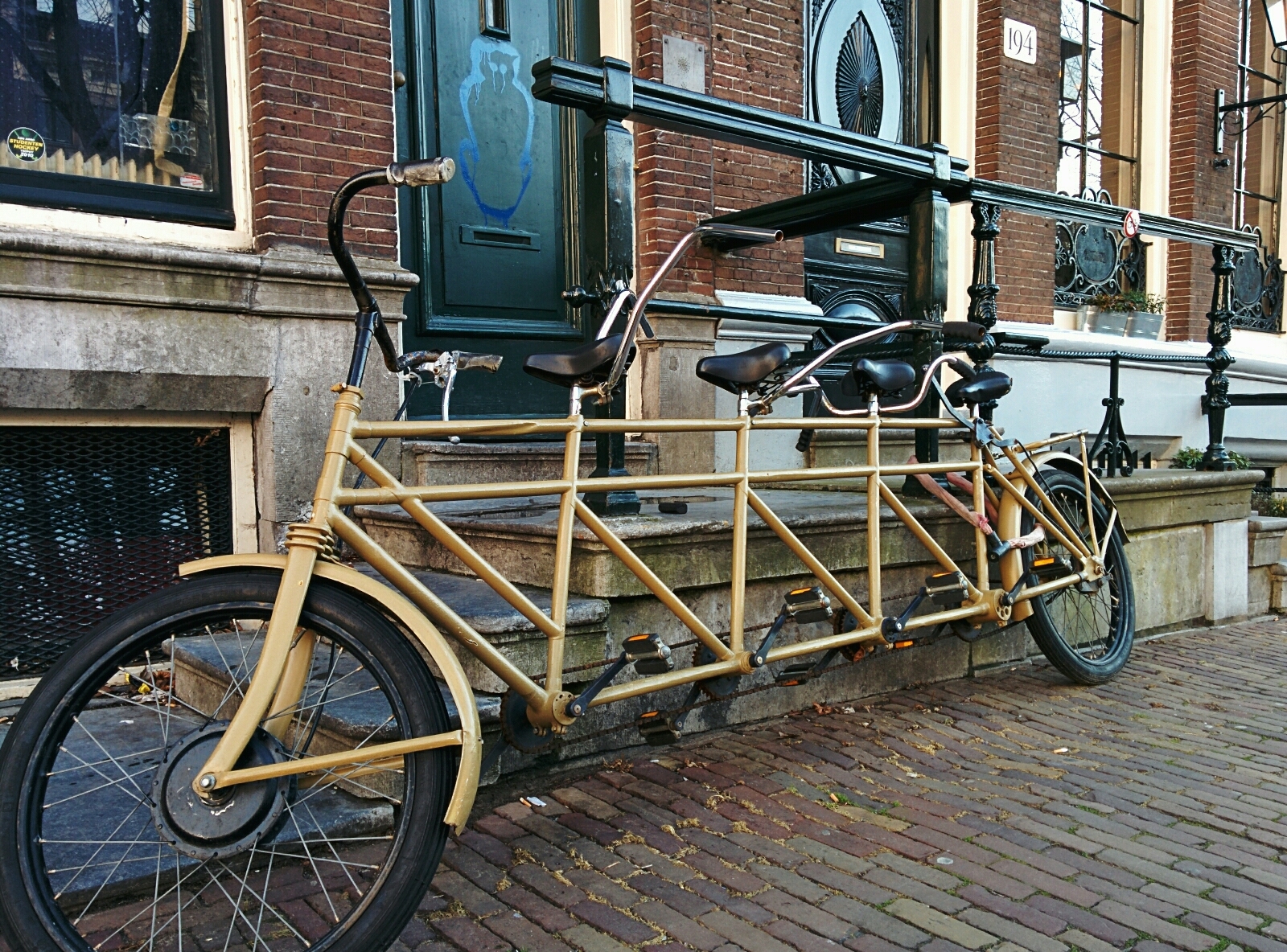Policy-makers and planners who are trying to make decisions about how to adapt to climate change often do not use relevant scientific information, even when it is available. As a result, research on climate change adaptation has been slow to impact policy and practice.
SEI’s new Tandem framework aims to address this gap between good science and good decision-making. It outlines a process for engaging policy-makers and planners dealing with adaptation-related decisions as full design partners of climate services. The framework is currently being tested through case studies on four continents.
Using the Tandem framework, like riding a tandem bicycle, requires collaboration. Photo: Simone Chan / EyeEm / Getty Images.
SEI researchers have designed a framework that outlines an approach for engaging intended users of climate change-related services as co-designers and co-producers of the services.
Detailed in an SEI discussion brief, the Tandem framework is designed to inform, guide and structure interaction between the varied participants in this process of linking climate services and climate policy. The aim is to enhance the usability, relevance, and sustainability of such services. These are essential issues for climate-resilient planning and policy-making underpinned by science, now and into the future.
Traditional supply-driven climate services usually establish a one-directional, science-to-policy relationship that has seldom led to policy action. A call is growing for a new approach, for climate services to evolve by producing and sharing information through a collaborative demand-and-decision-driven relationship.
Research shows that, with some caveats, co-exploration, co-production and transdisciplinary approaches create knowledge that is more relevant for users – and that such information is more likely to be used in decision-making. A key aspect of such approaches is collaboration and partnership between different stakeholders, including climate scientists, impact modellers, social scientists, adaptation and learning specialists, decision-makers and planners.
A shared co-design process can build stronger relationships and strengthen both individual and institutional capacities. Providers of climate information are likely to gain greater insight into users’ information requirements and decision-making complexities. At the same time, users are likely to enhance their understanding of climate projections and data, and their capacity to deal with the associated uncertainties or limitations.
Consider a tandem bicycle. Two people with differing skills, styles, and fitness levels need to overcome these differences to pedal in harmony to move forward to reach a given destination. To achieve this, riders need to communicate with one another, and to adapt their individual approaches, learning as they go, perhaps somewhat tentatively at first, until a rhythm is set. The alternative – for each rider to embark on a solo journey at her own pace and style – may seem easier. But independent riders on such journeys face risks. Riders who find themselves adrift from a fellow rider may lose their way, or they may choose different endpoints as events unfold along the way. Indeed, without close communication en route about complications (traffic, road closures, weather, for example), independent riders may never reach the same destination.
This is the philosophy that underpins the tandem concept. Providers driving a climate service design process may ultimately steer in a direction that suits their purposes, but this direction may not necessarily be relevant or usable for intended users – rendering it ineffective for decision-making. Working in tandem with users, while more challenging, ultimately reduces this risk. Going on the journey together promotes a shared understanding of obstacles, and fosters greater collaboration and learning along the way.
The Tandem framework outlines a holistic and iterative process that draws on lessons learned from scientific literature and ongoing SEI research. The SEI Discussion Brief also provides insights into how the process has worked in practice, in Lusaka, Zambia. Over a two-year period, the researchers worked with a range of Lusaka stakeholders, including public policy-makers, to co-create participatory processes and engagements that support climate information use in city decision-making. SEI is conducting case studies to test and refine the framework in a wide variety of settings around the world. The case studies are underway in Colombia (Caldas and Risaralda); Indonesia (Bali); Namibia (Windhoek); and Sweden (in Stockholm and Karlstad, and on the West Coast).
Note: SEI Senior Research Fellow Åsa Gerger Swartling will also present “Co-designing climate services ‘in context’: Climate in Tandem, a process- and decision-led framework and online guidance” at the European Climate Change Adaptation Conference in Lisbon, Portugal. The session is scheduled to begin at 14:00 Tuesday 28 May, OC063, Room S16.
Design and development by Soapbox.
